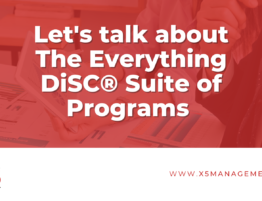
It’s that time of year again; time to start thinking about your strategic plan. The world had changed; there’s more competition, finding new markets is difficult, costs continue to rise, and yet you still need to figure out how to not only sustain your business but find a way to grow.
You’ve done them before – strategic plans. But somehow they just seem to sit on a shelf and gather dust. Maybe 20-30% is ever acted on, but generally your teams revert back to “same old-same old” in the busyness of their work, and the great ideas generated in your planning session never seem to come to fruition. So next time, this time, things will be different. By recognizing these five signs of disconnect between the plan and the execution plan, you can avoid the missteps and pitfalls of bringing your plan to its full potential.
There are some interesting and surprising statistics emerging on the efficacy of strategic planning. According to Cascade Research, 67% of leaders believe their organization is good at crafting strategy, but only 47% believe their organization is good at implementing strategy. Harvard Business Magazine (HBR) researchers have conducted multi-year studies on why strategy execution unravels, and their research reveals that several beliefs about strategy implementation we think to be true are not.
Organizations need more than a strategic plan, they need a strategic execution plan. In this article we will highlight what the research is revealing and offer suggestions on how companies can get strategic plans off the shelf and deliver expected and exceptional results.
Take comfort, you’re not alone – A recent survey of more than 400 global CEOs found that executional excellence was the number one challenge facing corporate leaders in Asia, Europe, and the United States – ahead of innovation and top-line growth – and that two-thirds to three-quarters of large organizations struggle to implement their strategies.
Issue #1 – It’s More Than Alignment, it’s Coordination
The question “can I count on you” depends on who “you” is. According to Harvard’s research, reliability was strong up and down the hierarchy of the chain of command – 84% for both bosses and direct reports – but people in other units were not considered reliable (colleagues in other departments 59%, external partners 56%).
In Harvard’s survey, when managers were asked to identify the single greatest challenge to executing their company’s strategy, 30% cited failure to coordinate across units, and they were three times more likely to miss performance commitments because of insufficient support from other units rather their own teams’ failure to deliver. How are your departments coordinating their roles in executing your plan?
Issue #2 – The Roadmap isn’t a Straight Line
After investing time, money, and energy into formulating a plan and its associated budget, you may view your plan only through a myopic lens that allows for no deviation or adaptation. Such divergence would be considered a lack of discipline or undermining the plan. But the very definition of a strategy execution is to seize opportunities that support the strategy while coordinating with other parts of the organization on an ongoing basis.
According to the Harvard survey, when market trends shift, most organizations either react too slowly to seize fleeting opportunities or mitigate emerging threats (29%), or react too quickly and lose sight of company strategy (24%). Are you responsive or reactive to market shifts?
Issue #3 – Communication ≠ Understanding
Once a Strategic Plan has been crafted, likely your VP Marketing / Communications will endeavor to roll out a robust communications plan. But does communication equal understanding?
When a management team was asked through the Harvard survey to describe the firm’s strategy in their own words and to list the top five strategic priorities, fewer than one-third could name even two. And not surprising, this is a common response.
In other surveys conducted by the Harvard research team, only 55% of the middle managers could name even one of their company’s top five priorities, and even when they could, managers did not have a clear sense of how major priorities and initiatives fit together.
How rampant is this disconnect? Fewer than one-third of senior executives’ direct reports clearly understood the connections between corporate priorities, and that figure plummeted to 16% for frontline supervisors and team leaders.
Emails and constant meetings to “drive home” the strategic priorities does not work unless middle management and front line employees can articulate in their own words the strategic priorities and how they personally impact the desired results. Can your teams describe your strategic priorities?
Speaking of communication, we cover how to Identify Communication Styles in Sales and Service in this post.
Issue #4 – Who Drives the Strategic Execution Bus?
When you and your executive team ‘drive the bus’ of executing the strategy, you diminish the organization’s capacity to execute over the long run, and increase the risk of the execution unravelling should one of your executive team members depart. Moreover, if your top executives insist on making important calls themselves, they undermine middle managers’ decision-making skills, initiative, and ownership of results.
“Distributed” leaders, i.e. middle managers and supervisors, are the “face” of your company to most employees, partners, and customers, and they are the ones who should be driving the strategic execution “bus”. But in doing so, they need to be nurtured, supported, and guided from the top. Unfortunately this is often not the case.
Distributed leaders are often constrained in their efforts to translate overall company strategy into meaningful terms their teams or units can get behind. A question that might be posed to all staff in the organization is “who owns the burden of success?” The answer? Everyone! Do your teams believe they own the burden of success?
Issue #5 – Does a Performance Culture = Execution Success?
When strategy execution fails to translate into results, a weak performance culture is an easy scapegoat.
In the Harvard study, two-thirds of all managers surveyed named past performance as the most frequently named factor in promotion decisions. It also ranked among the top three influences on who gets hired. One-third of managers believe that performance is also recognized all or most of the time with nonfinancial rewards, such as private praise, public acknowledgment, and access to training opportunities.
So if companies have a strong performance culture, why are they struggling to execute strategy? The answer is too much emphasis is based on performance. More value is focused on a manager’s ability to hit their numbers, and much less value on their ability to adapt to changing circumstances—an indication of the agility needed to execute strategy.
50% the managers surveyed believe that their careers would suffer if they pursued but failed at novel opportunities or innovations. Fewer than one-third of managers say they can have open and honest discussions about the most difficult issues, while one-third say that many important issues are considered taboo.
In other words, if performance trumps coordination it will undermine strategy execution. Does performance trump coordination in your organization?
Now What?
Now that we have identified the barriers facing strategy execution, let’s look at ways you can overcome these issues and really deliver on your plan.
Solution #1 – Check-ins
It is typical and expected that companies “check-in” on the progress of their strategic plan, but who is at the check-in table?
In order to address on the coordination vs. alignment misstep (Issue #1), why not consider only having middle managers, supervisors and relevant external partners come together for a check-in with each other?
In other words, remove senior executives from the check-in process initially to allow those responsible for the execution of the plan to address and overcome whatever insufficient support is cropping up that impacts the delivery of results.
Certainly senior executives need to be informed as to the progress of the plan, but not overtake it. This also addresses Issue #4, Who Drives the Strategic Bus?, where the “burden of success” rests with distributed leaders and their teams.
If you want your distributed leaders to own the plan, they need authority with responsibility.
Looking for more resources on leadership? Read this post for 5 Tips to Enhance Leadership Listening here.
Solution #2 – Finger on the Pulse
Innovation is not a department, it is a mindset. Everyone in the organization needs to be attuned to shifts in technology, markets, or regulations that may impact what might have otherwise been a wise strategic initiative.
If circumstances change (Issue #2), the company needs to address and embrace whatever adaptation is required, and the messaging from the top needs to reflect this tolerance for new ideas.
If emphasis stays focused on hitting numbers, fear of agility or adaptability will cause managers to hold back on possible solutions to unforeseen shifts in the business. Myopic focus that eliminates adaptation may cause the strategic plan to fail. Coach your teams to be proactive and responsive as opposed to reactive or non-responsive when it comes to those unforeseen shifts.
Solution #3 – I Get It!

Here’s an interesting idea. Once the Strategic Plan has been rolled out and communicated throughout the organization, ask employees to articulate in their own words what their specific action item will be that advances a strategic goal, and what it means to them (Issue #3).
This will clearly demonstrate if the communication plan has worked, and your senior executives will know quickly if front line employees know, understand, and embrace the plan. And if not, how can the company improve the message so that they do know, understand, and embrace the plan?
Conclusion – Reframe and Re-define
We stated at the outset that organizations need more than a strategic plan, they need a strategic execution plan. To overcome many of the missteps discovered in HBR’s research, you and your top executives need to re-define execution by pushing ownership down to your distributed leaders and coach them from the sidelines by providing the tools and resources necessary for success.
Re-framing communication of the plan beyond words to actually understanding it’s intent will allow managers to ensure their teams can clearly articulate goals and what those goals mean to them personally.
By identify factors that may be stalling progress, managers at all levels can re-focus efforts to get back on track. The strategic plan may be the steering wheel, but execution of the strategy is the engine that propels it forward.
For more on strategic planning, check out this page next!
Questions to Consider:
- Is your strategic plan rolling out as you expected? Are your teams letting barriers – real or perceived (we’re too busy) – suppress momentum? Are they focused on what they can’t do as opposed to what they can do?
- Did you establish clear action items with built in deadlines as part of your strategic plan? Are your teams struggling to understand exactly what it is they are supposed to do, and by when, in reaching your strategic plan goals?
- Did your enthusiasm overextend your capability? Do you have too many goals over too long a time period? Can your teams get laser focused on executing 3-5 strategic priorities, or are they lost in a sea of expectations?
- Do you actually have a strategic plan? Or is it only that you think you have strategic plan? Could your employees, or even your management team, articulate the top priorities of the strategic plan? Would they know if they achieved it?
“That was the best Strategic Planning session I’ve ever attended. Our team left the planning sessions feeling aligned, energized and ready to take on a big year of growth.”
– Richard Hansen, President Sky Eye Measurement
At X5 Management we have skilled, independent strategic planning facilitators who can:
• Assist in identifying and analyzing barriers to success in executing your strategic plan, and get you back on track;
• Help you build out “Strategy Solutions Worksheets” – real action items with timelines and accountabilities to the teams.
• Help you hone in on 3-5 Strategic Priorities so your teams can get laser focused on what they need to do to execute your plan. No more excuses (barriers will still exist, but it’s about what they can do, not about what they can’t do)
• Work with you to craft a realistic, achievable, executable strategic plan with scheduled follow ups to ensure traction.
If you are struggling with any of these challenges, why not contact X5 today for a complimentary Discovery Meeting to determine how we can best assist you in crafting or fine tuning your strategic plan that addresses both challenges and opportunities.
Did you like reading about these strategic execution and planning topics? Here are some posts to read next:
Reference
Homkes, R., Sull, C., & Sull, D. (2015). Why Strategy Execution Unravels—and What to Do About It. Harvard Business Review Magazine, March 2015. Retrieved from https://hbr.org/2015/03/why-strategy-execution-unravelsand-what-to-do-about-it









Write a comment: